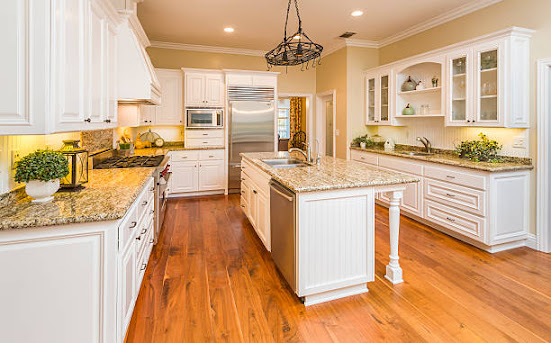How to Achieve a Minimalist Look for Your Home
In a world filled with distractions and clutter, the minimalist approach to home design offers a breath of fresh air. Minimalism is not just a design trend; it's a way of life that encourages simplicity, functionality, and a sense of tranquility in your living spaces. If you're wondering how to make your house look minimalist, we've got you covered with some practical tips and ideas.
1. Declutter Ruthlessly: The first step towards achieving a minimalist look for your home is to declutter. Go through each room and identify items that you no longer need or use. Be ruthless in your decision-making process. The goal is to keep only the essentials and items that bring you joy. Donate or sell what you can and dispose of the rest responsibly.
2. Choose a Neutral Color Palette: Minimalist interiors often feature a neutral color palette consisting of whites, grays, blacks, and earthy tones. These colors create a clean and serene backdrop for your living spaces. Consider painting your walls in a soft white or light gray and use neutral-colored furniture and decor to maintain a cohesive look.
3. Streamline Furniture: When selecting furniture, opt for pieces with clean lines and simple designs. Avoid bulky or overly ornate furniture that can overwhelm the space. Multi-functional furniture, like a sofa with hidden storage or a dining table that can be extended when needed, is ideal for achieving functionality in a minimalist home.
4. Embrace Minimalist Decor: Keep decor items to a minimum and choose them carefully. A single piece of artwork or a statement wall clock can serve as a focal point without overwhelming the space. Incorporate indoor plants to add a touch of nature and freshness to your home.
5. Clear Countertops and Surfaces: In the kitchen and bathroom, strive for clear countertops and surfaces. Store appliances, utensils, and toiletries out of sight in cabinets or drawers. This not only creates a more streamlined look but also makes cleaning and maintenance easier.
6. Limit Textures and Patterns: Minimalist design often favors simplicity in textures and patterns. Choose smooth and clean materials like glass, metal, and wood. If you want to introduce patterns, do so sparingly and in a way that complements the overall aesthetic.
7. Maximize Natural Light: Natural light is a key element of minimalist design. Allow as much natural light into your home as possible by using sheer curtains or blinds that can be fully opened during the day. Well-placed mirrors can also help bounce light around the room.
8. Conceal Cables and Wires: To maintain a clean and uncluttered look, hide cables and wires from electronic devices. Use cable organizers, cord covers, or cable clips to keep them out of sight. This small step can make a big difference in achieving a minimalist appearance.
9. Create Storage Solutions: In a minimalist home, effective storage solutions are essential. Invest in built-in cabinets, shelves, or storage furniture that can hide away your belongings when not in use. Keeping everything organized and tucked away contributes to the minimalist aesthetic.
10. Maintain the Minimalist Mindset: Finally, remember that minimalism is not just about the physical appearance of your home but also about adopting a minimalist mindset. It's about appreciating the value of less and focusing on what truly matters to you.
In conclusion, making your house look minimalist involves simplifying your surroundings, adopting a neutral color palette, choosing clean and functional furniture, and creating a clutter-free environment. By following these tips and embracing the principles of minimalism, you can transform your home into a serene and inviting space that reflects your desire for simplicity and balance. Discover more, click here




Comments
Post a Comment